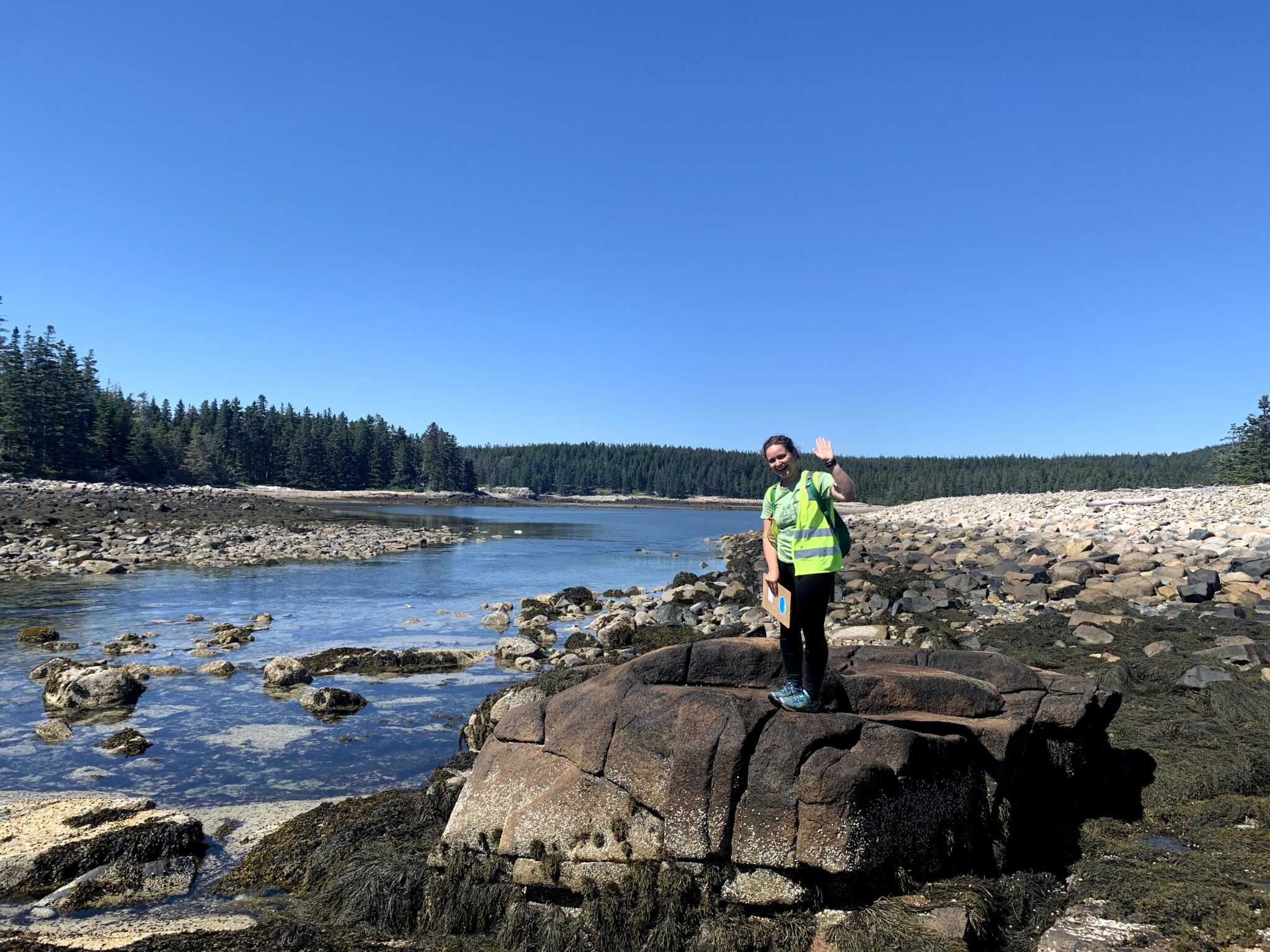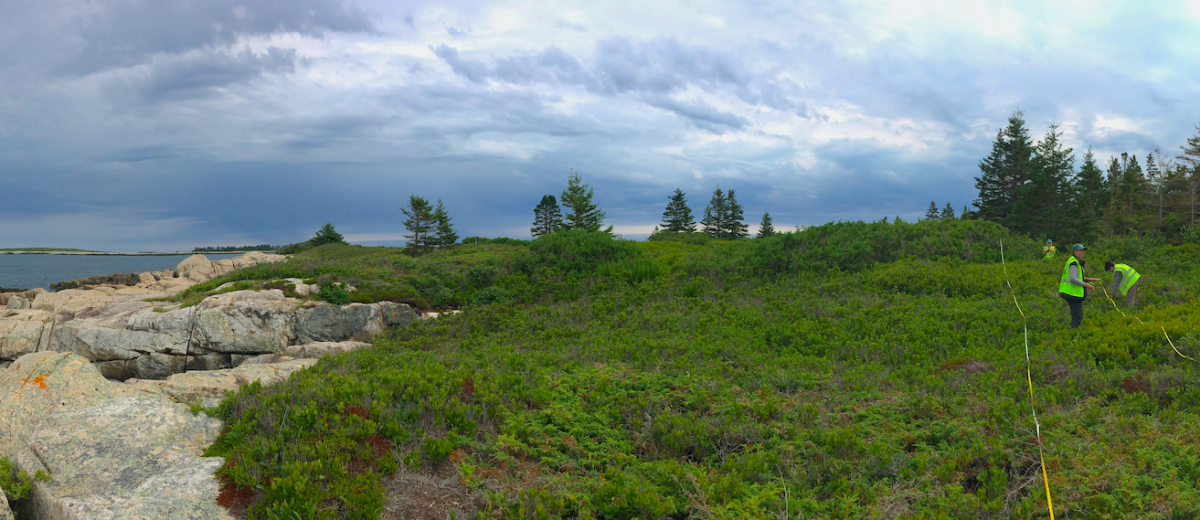Taking evidence from anecdotal to quantifiable
story and photos by Jess Moskowitz, 2021 Intern from Mount Holyoke College
On our first day of the season, technicians and interns walked together to catch the sunset from Schoodic Point. The sky had just begun to gleam with alpenglow as we filed along the edge of Arey Cove Road. Just before the road curved to arrive at Schoodic Point’s parking lot, I heard rocks shifting in the steep boulder field that dips to the intertidal. I looked in time to catch a flash of sleek brown, took another step and locked eyes with a river otter. It happened so quickly, that by the time I had managed to gasp “look!” to my companions, the otter had disappeared between boulders.
It was fitting that this critter encounter was how my summer began, as I soon learned that the focus of my eight-week internship would be studying the very phenomenon I had accidentally witnessed — land-dwelling mammals feeding in the intertidal.
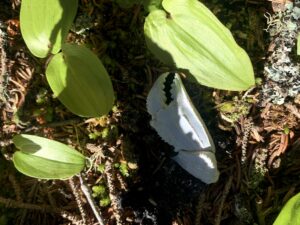
To the river otter, a trip to the intertidal means a salty crustacean snack, but on an ecosystem scale, this intertidal foraging contributes to what scientists call an “ecological cross-system subsidy.” These occur when ecosystems converge and nutrients, materials, and organisms flow between systems. These exchanges are dynamic, vital and at the same time largely understudied.
Here in Acadia, where forest meets ocean, we have an ideal venue for subsidies to occur. Land-dwelling animals, river otters being one example. As they make their way to the intertidal zone to forage for food, they move nutrients and energy, becoming part of the flow from ocean to forest, maintaining ecosystem productivity at a landscape scale. Cross-system subsidies are dynamic and complex, occurring on varying scales all around us. While widely recognized as a phenomenon, ecological subsides persist as an understudied aspect of community ecology.
What does this mean for conservation and restoration efforts? Knowing the rate and impact of system subsidies enables resource managers to appropriately prioritize maintaining system connectivity, for example not building roads or other obstacles between ecosystems that frequently interact, maintaining buffers and margins of space between systems.
So we know subsidies can be important and we want to understand them better, but what comes next? When I arrived at Schoodic Institute in June this was the question.
I set out to quantify the rate of ecological subsidies occurring on the Schoodic Peninsula. Asking questions on a community ecology scale can get messy fast. There are so many variables to consider, but we needed to start at square one. To quantify the relationship, we needed to start with two things: something observable and a place to make observations.
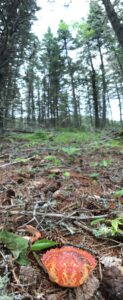
First, what to observe. The answer to this question materializes if one pays special attention to the forest floor while wandering through coastal forest. You will find lots of stuff on the ground that may surprise you, but among these will be shells. Intertidal-dwelling crustaceans do not walk into the forest and leave their shells behind of their own accord. How do shells end up in the forest? Forest critters consume intertidal prey and leave shells behind. Therefore, finding remains of intertidal organisms in the forest can tell us something about the occurrence or subsidies.
Second, where to search. This is a critical question when conducting a field survey. Where and how you look for something will change what question you are asking and what you will find. There are an abundance of questions we want to ask about the cross-system subsidies that are occurring here at Schoodic, but before we can begin to dig into any of them we need a way to direct our search.
So the initial questions we chose to address with this pilot study were 1) where in relation to distance from the intertidal zone are we likely to find remains of intertidal prey? And 2) are there any characteristics of the environment that influence the abundance of remains found? We decided to establish plots cutting perpendicularly into the forested coast, and conduct our survey by searching these plots for shells on a monthly basis. This method allowed us to monitor if the shells found changed overtime and relate found shells to the characteristics of their plot.
This is how my summer research began, crawling through underbrush looking for shells. In Acadia National Park it is hard to scrounge through forest debris without drawing attention from curious onlookers. Park visitors asked us many questions about what we were researching, and this presented us an opportunity to talk with them about ecological subsidies. It was through these impromptu interactions with park visitors that we encountered an unexpected trove of anecdotal evidence of ecological subsidies in Acadia.
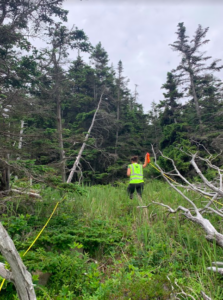
Nearly everyone we spoke with had their own account of a land-dwelling mammal feeding in the intertidal. People shared testimony of the mink, otters, raccoons, and fisher cats they had encountered scatting, hissing, foraging, and playing in the intertidal zone. Anecdotes from an observant public piled up as our field work continued and I began to see how each story that was shared with us fit into the larger story we were uncovering.
This is what the scientific method has come to mean to me, uncovering a story using methods and data. Developing a protocol is about refining which story you want to delve into, choosing the characters and then learning to listen because like any good story you might be surprised by what you hear. While sometimes the scientific method can seem reductive, done well it can be holistic and a means by which anecdotes and personal accounts are explained and synthesized.
As our first season studying ecological subsidies on Schoodic drew to a close and we look toward the next steps of the project, we are left with more questions than answers. The preliminary data might not yet tell us the full story of system connectivity in Acadia, but we are one step closer. Next year we will add to these preliminary data—returning to this summer’s sites, and expanding to new sites—and build a fuller story of system connectivity in Acadia.
References
Buckner, E.V., Hernández, D.L. & Samhouri, J.F. Conserving connectivity: Human influence on subsidy transfer and relevant restoration efforts. Ambio 47, 493–503 (2018). https://doi.org/10.1007/s13280-017-0989-4
Carlton, James T. and Janet Hodder. Maritime mammals: terrestrial mammals as consumers in marine intertidal communities. Marine Ecology Progress Series 256, 271-286 (2003). https://www.int-res.com/abstracts/meps/v256/p271-286/
